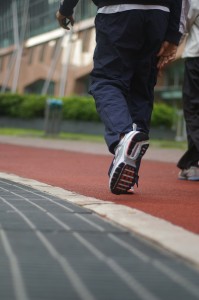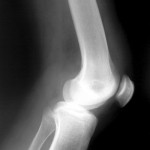
Almost everyone will have a minor knee problem during their lifetime. Our body movements don’t cause us problems most of the time, but some symptoms related to the knee can develop from every day wear-and-tear, injury, or simply from over use of the knee joint. These knee problems often happen during sporting activities or work-related tasks.
Some people are more likely than others to develop knee injuries andproblems. There are factors that increase your chances of having these issues such as certain jobs, sporting and recreation activities, getting older, or having a disease like arthritis or osteoporosis. Knee problems are the most common reason for visiting an orthopedic specialist’s office.
The knee is your body’s largest joint. Two discs known as the meniscus separate the upper and lower leg bones. There are many tendons, ligaments, and muscles that connect the upper leg bone (femur) to the lower leg bones (the tibia and fibula). There is articular cartilage inside the joint to absorb shock and provide the smooth gliding movement of the knee.
There are four major ligaments found in the knee and three of these are commonly injured during sporting activities. These include the anterior cruciate ligament (the ACL), the medial collateral ligament (the MCL), and the posterior cruciate ligament (the PCL).
What are the most common ligament injuries?
ACL Injury – When you change direction rapidly or land wrong from a jump, you can suffer tears of the ACL. Athletes who ski, basketball players, and football players are susceptible to ACL injuries.
MCL Injury – Damage to the MCL usually occurs from a direct blow to the outside of the knee. This type of injury most often occurs in contact sports like soccer or football.
PCL Injury – When an athlete receives a blow to the front of the knee or to the upper tibia (lower leg bone) or makes a simple misstep on the playing field, a PCL injury can occur.
Other Knee Injuries
Torn Cartilage – A torn meniscus is common during athletic activities. This occurs when twisting, cutting, decelerating, pivoting, or being tackled. Usually, the meniscus is torn from pivoting on the bent knee.
Sprains and Strains – When the ligaments and tendons are stretched or pushed beyond their normal capacity, a sprain or strain can occur.
 Kneecap Dislocation – The kneecap (patella) can slip out to the side of the knee with direct contact to the kneecap or with a twisting injury.
Kneecap Dislocation – The kneecap (patella) can slip out to the side of the knee with direct contact to the kneecap or with a twisting injury.
Patellofemoral Pain Syndrome – This is pain that occurs in the front of the knee from overuse, injury, excessive weight, or alignment problems of the knee.
Iliotibial Band Syndrome – When there is irritation and inflammation of the band of fibrous tissue that runs down along the lateral (or outside) of the thigh and knee, this particular syndrome occurs and leads to pain.
Your orthopedic specialist will use a variety of methods to treat knee injuries. A common method is known as the RICE method. This stands for “rest, ice, compression, and elevation”. You rest the knee by staying off of it, using crutches, and protected weight bearing. You ice the knee to control swelling and relieve pain. A compression elastic bandage is used to give the injured knee support and to help control swelling. Finally, the knee is kept elevated to reduce swelling. With a new injury, keeping swelling down helps to limit bruising and bleeding into tissues and controls pain.
Many serious injuries that result in torn ligaments and cartilage may require surgery or an arthroscopic procedure in order to heal properly. The orthopedic surgeon will advise you on what is best considering your activity level and your desire to return to your recreation and work activities.
More about knee problems can be found in our knee category.
Find OSS on Facebook and follow on Twitter to keep up to date on new articles and news.
